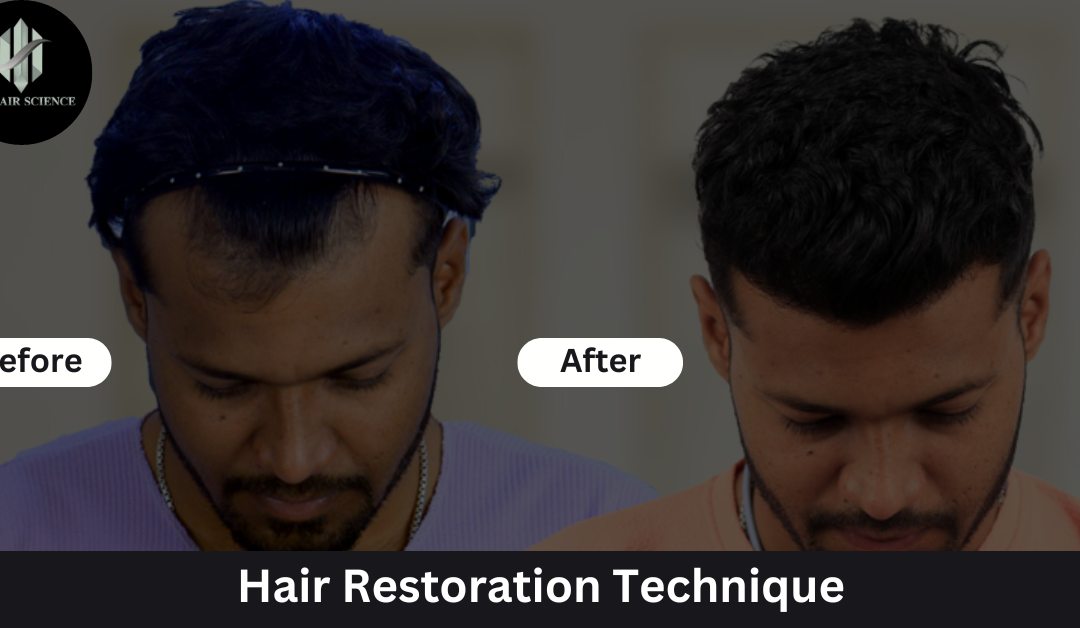Understanding Hair Restoration Techniques
Follicular Unit Transplantation (FUT)
Higher Graft Yield: FUT typically yields a higher number of grafts in a single session compared to other methods, making it efficient for covering larger areas of hair loss. This advantage is particularly beneficial for individuals with extensive balding who require significant coverage with fewer sessions.
Cost-Effective: Due to its ability to harvest a significant number of grafts per session, FUT is generally more cost-effective than FUE for patients needing extensive hair restoration. The efficiency of graft harvesting and transplantation reduces overall procedure costs, making it a practical choice for those on a budget.
Suitable for Extensive Hair Loss: Ideal for individuals experiencing significant hair loss, FUT allows for the transplantation of a larger quantity of hair follicles in one procedure. This makes it effective for addressing extensive balding areas in a single session, providing comprehensive coverage and natural-looking results.
Follicular Unit Extraction (FUE)
Minimally Invasive: FUE involves minimal disruption to the scalp tissue, leading to quicker recovery times and reduced post-operative discomfort compared to FUT. Patients often experience less pain and a faster return to normal activities following the procedure.
No Linear Scarring: Unlike FUT, which leaves a linear scar where the donor strip is harvested, FUE results in tiny, dot-like scars that are less noticeable. This minimal scarring is advantageous for individuals who prefer wearing their hair short or in styles that expose the donor area.
Flexibility in Extraction: FUE allows for the extraction of hair follicles from various parts of the body, not just the scalp. This flexibility enables surgeons to select donor sites based on hair characteristics and donor availability, ensuring optimal results tailored to each patient’s unique needs.
Interlocking FUE Technique
The Interlocking FUE Techniquerepresents an evolution of traditional FUE, designed to enhance the aesthetic outcomes of hair transplantation procedures. This advanced method involves creating interlocking patterns during graft placement in the recipient area, ensuring a denser and more natural hairline appearance. Key benefits of the Interlocking FUE Technique include:
Enhanced Density: By interlocking the grafts, this technique allows for closer placement and a higher density of transplanted hair follicles. This results in a fuller-looking hairline with improved coverage and a more natural distribution of hair.
Improved Aesthetic Results: The precise placement of grafts minimizes gaps between transplanted hairs, creating a more uniform and aesthetically pleasing hair restoration outcome. This meticulous approach enhances the overall appearance and symmetry of the hairline, meeting patient expectations for natural-looking results.
Minimized Trauma and Faster Healing: The Interlocking FUE Technique reduces trauma to the scalp during graft placement, promoting faster healing and minimizing post-operative discomfort. Patients benefit from quicker recovery times and enhanced graft survival rates, ensuring long-term success and satisfaction with their hair restoration procedure.
These innovative techniques offer diverse options for individuals seeking effective solutions to hair loss, each tailored to specific needs and preferences. Consulting with a qualified hair transplant specialist is essential to determine the most suitable technique based on individual hair characteristics, extent of hair loss, and desired aesthetic outcomes.
Determining the Most Appropriate Technique:
Extent of Hair Loss
Mild to Moderate Hair Loss: FUE or the Interlocking FUE Technique is often recommended for individuals with mild to moderate hair loss, as these methods provide natural-looking results with minimal scarring.
Extensive Hair Loss: FUT might be more suitable for those with extensive hair loss, as it allows for more grafts to be transplanted in a single session.
Scarring
Concerned About Scarring: If you are worried about visible scarring, FUE or the Interlocking FUE Technique are better options due to their minimally invasive nature and lack of linear scarring.
Less Concern About Scarring: If scarring is not a significant concern, FUT can be a viable option, especially if you require many grafts.
Recovery Time
Quick Recovery Desired: FUE and the Interlocking FUE Technique offer speedier recovery times with less post-operative discomfort, making them ideal for individuals who want to resume their normal activities swiftly.
Longer Recovery Time Acceptable: If you can accommodate a more extended recovery period, FUT is a suitable option that provides many grafts.
Hair Characteristics
Hair texture, including thickness and curliness, also influences the technique. Thicker, coarser hair provides more coverage with fewer grafts, while finer hair may need more grafts for a similar effect. Techniques like the Interlocking FUE might benefit finer hair for a denser appearance, while FUT can be advantageous for thicker hair needing extensive coverage.
Consulting with a hair restoration specialist is essential. They can assess your hair density, texture, and scalp condition to recommend the best technique for you, ensuring natural-looking, long-lasting results.
Consulting with a Hair Transplant Specialist
By working closely with a specialist, you can make an informed decision about the most appropriate hair restoration method for you, enhancing both your appearance and confidence.
Conclusion:
Tags : Hair Transplant,IFT Hair Science ,Hair Restoration,Interlocking FUE Technique,hair loss treatment,Hair Transplant Specialist,Hair Restoration Techniques

